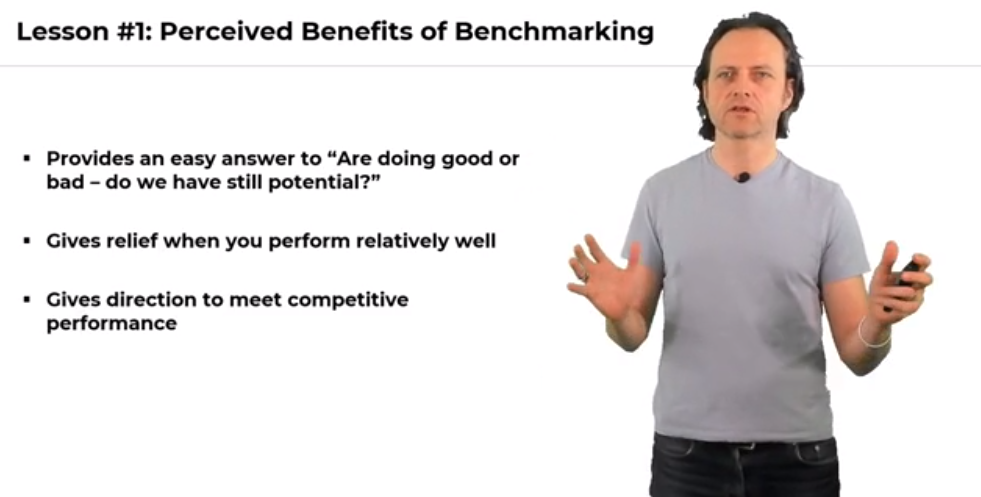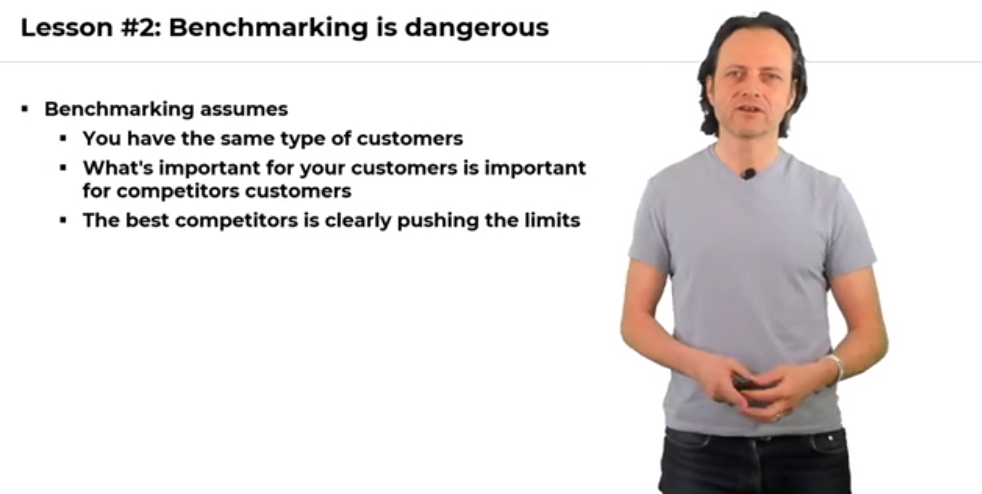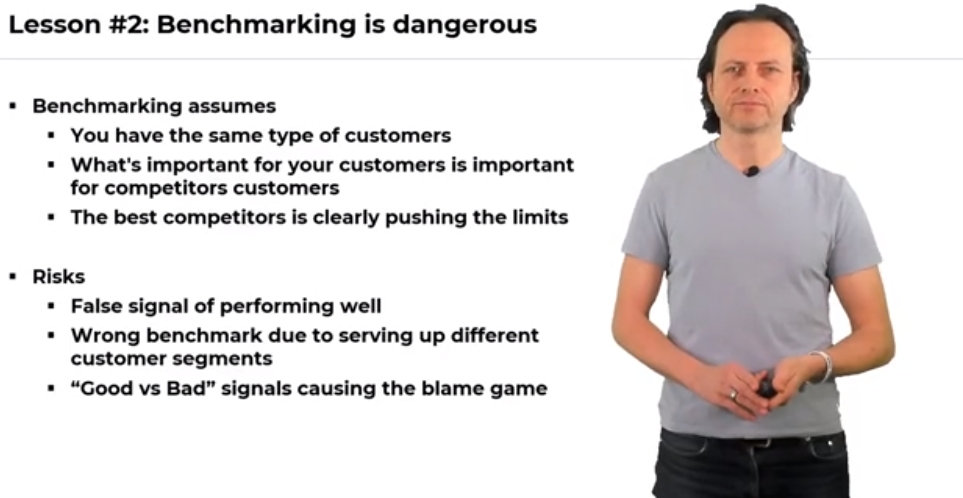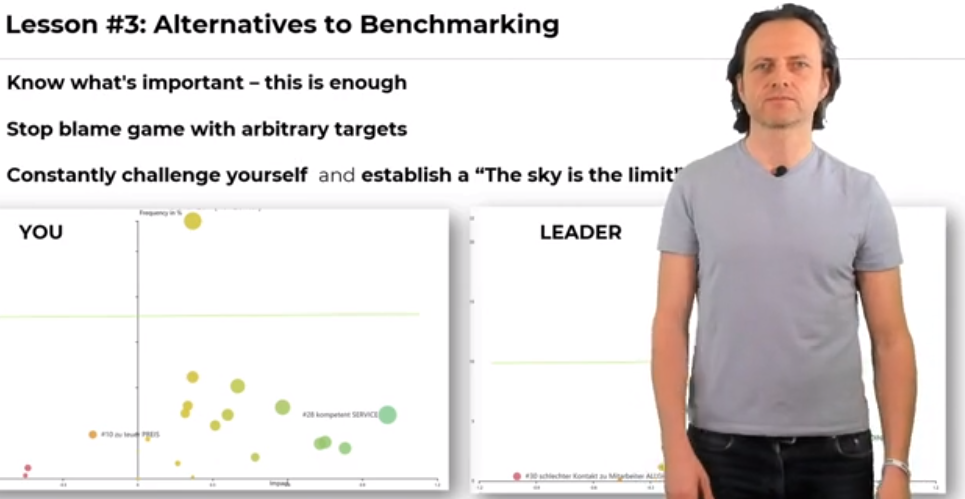These canvases belong to the same industry i-e.,
- YOU – It denotes the customers.
- LEADER – It denotes the market leader.
You can see all the different topics, and the green line is just a 10% mark. Below is the competent service (written in German) in the customers’ canvas and experience at the touchpoint (written in German) in the market leader’s canvas. The positive topics of the leader are much better than those of the customers, which means that the most important mentioned topics are some way better than for us. Interestingly, it is the case for 95% or more topics in which the leader is better.
Do you think this is the case only here? According to the research of Professor Byron Sharp from Ehrenberg-Bass Institute:
“The NPS and the frequencies of the items are better for the market leaders.”
If you look at benchmarking, you will need to level up everything the customers have. They have just a handful, maybe four or so items, that are comparable to the leader. So, it’s questionable if this is a real benchmark.
You also see that the leader’s key drivers and key leakages are different from those of your customers. So, there is a strong indication that you have attracted a different breed of customers.
The above example shows that benchmarking doesn’t lead you to good information. If you want to improve your customer experience, look at your key driver canvas, and it will tell you how to become better. It may be useful when attracting other customers as you understand what the pain points or hidden drivers of the competition are. So, you can attract them with the right marketing. But, remember that the market leader canvas is for marketing and the other one is for customer experience management.
So, benchmarking itself is not needed as it is not a descriptive exercise. It can not tell you what’s important and what’s not. It can only tell you where you are better and where you are worse.
My recommendation is:
- Know what’s important as it’s enough.
- Stop blame game with arbitrary targets.
- Constantly challenge yourself and establish a “The sky’s the limit mindset.” It’s because with benchmarking, you only address or look at where you are bad in, but it would make much more sense to take certain criteria and excel by getting much better than the competition. You don’t have to look back. Instead, you have to look forward.
Therefore, there is no reason for looking at the competition. Look at your customers because:
You have to serve your customers, not your competition.
Here’s a nice quote:
“Look In The Mirror. That’s Your Competition.”
So, do not benchmark as it sets the wrong incentives.

















